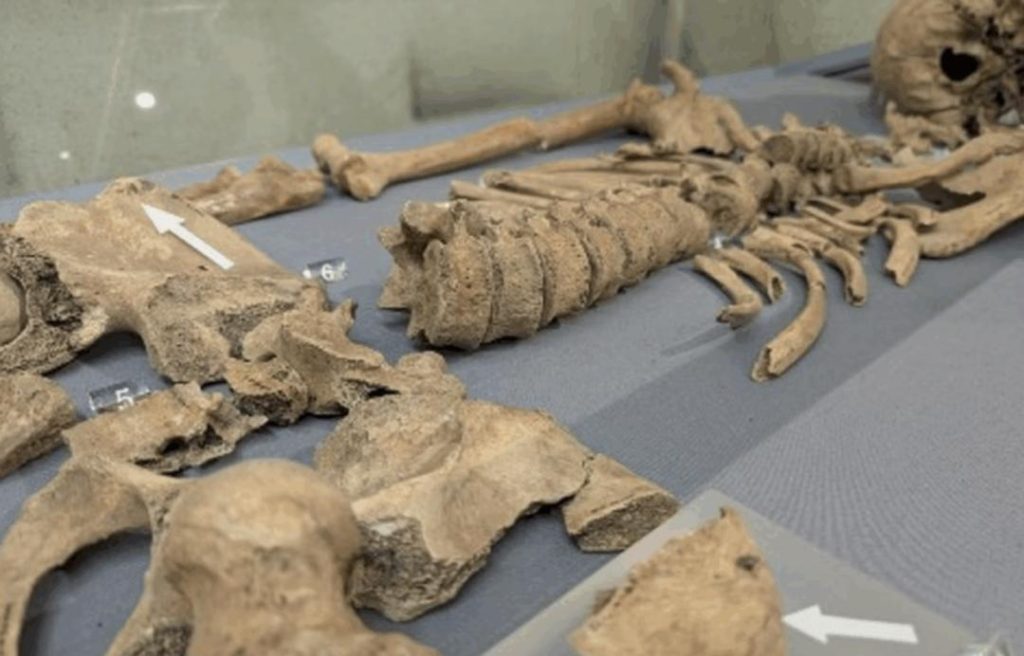
Gladiator Skeleton Reveals First Evidence of Combat with Lions
Archaeologists have made a groundbreaking discovery in York, uncovering the first physical proof of Roman gladiators fighting lions. The incredible find, a skeleton with bite marks, has shed new light on the brutal Roman entertainment that once took place in the city. The discovery is significant not only because it confirms the existence of these staged battles but also because it suggests that York hosted gladiatorial games with exotic beasts, far from the traditional Roman hubs.
The skeleton, believed to be that of a Bestiarius, a type of gladiator who specialized in fighting wild beasts, was unearthed during excavations at the York Archaeological Trust’s Roman multistorey building, known as the Roman Legionaries’ Barracks. Forensic scans of the skeleton revealed a set of gruesome bite marks on the bones, which were likely inflicted during a staged spectacle.
The discovery is a significant find for historians and archaeologists, as it provides tangible evidence of the brutal entertainment that took place in Roman Britain. The Roman Empire was notorious for its gladiatorial games, which often featured human combatants fighting each other or wild beasts for the amusement of the Roman crowd. However, until now, there has been limited physical evidence to support these accounts.
The skeleton, which dates back to the 2nd century AD, is a testament to the brutal nature of Roman entertainment. The bite marks on the bones are a clear indication that the gladiator died as a result of a mauling by a lion. The presence of the bite marks on the skeleton, combined with the forensic analysis, leaves little doubt that the gladiator was fatally injured during a staged battle.
The discovery is also significant because it suggests that York may have hosted gladiatorial games with exotic beasts, unlike other Roman cities. While Rome and other major Roman cities were known for their gladiatorial games, featuring humans fighting humans or animals, York’s unique location on the northern edge of the empire may have made it a hub for more exotic and unusual entertainment.
The York Archaeological Trust’s discovery is a testament to the importance of archaeological excavations in uncovering the secrets of the past. The trust’s efforts to preserve and study the Roman heritage of York have led to numerous significant discoveries, including the remains of a Roman fort, a Roman temple, and even a Roman bathhouse.
The discovery of the gladiator skeleton with bite marks has sparked renewed interest in the Roman entertainment of the past. It serves as a reminder of the brutal nature of Roman gladiatorial games, which were often staged for the amusement of the Roman crowd. The find also highlights the importance of archaeological excavations in uncovering the secrets of the past, providing a tangible link to the people and events that shaped our history.
As historians and archaeologists continue to study the discovery, they hope to learn more about the life and death of the gladiator. The skeleton is now being preserved and studied in a specialized laboratory, where researchers are working to learn more about the gladiator’s life, including his age, diet, and the circumstances surrounding his death.
In conclusion, the discovery of the gladiator skeleton with bite marks is a significant find that sheds new light on the brutal Roman entertainment of the past. The skeleton, which dates back to the 2nd century AD, provides tangible evidence of the staged battles that took place in Roman Britain, and suggests that York may have hosted gladiatorial games with exotic beasts. The discovery is a testament to the importance of archaeological excavations in uncovering the secrets of the past, and serves as a reminder of the brutal nature of Roman gladiatorial games.






